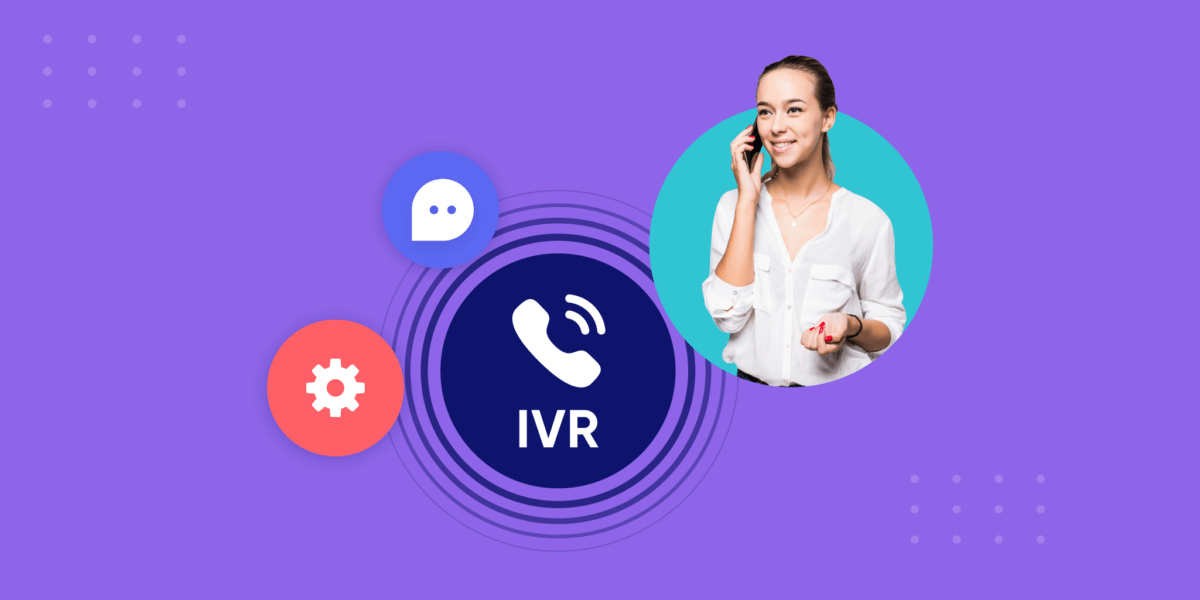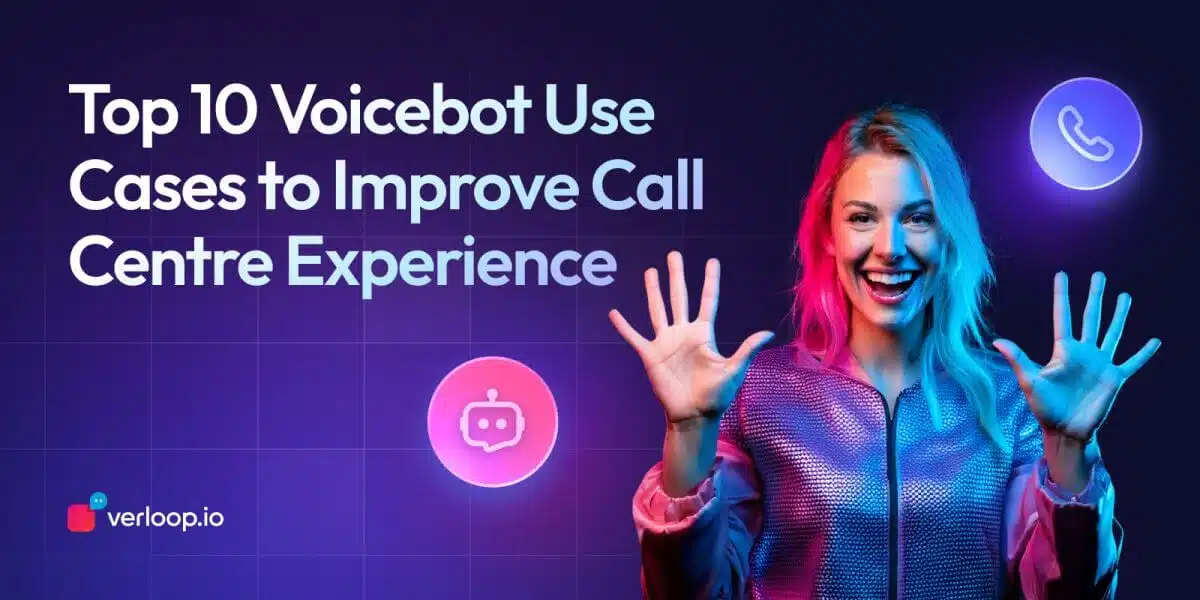
How To Automate Loan Collection With AI Call Automation
- May 30th, 2025 / 5 Mins read
-
Harshitha Raj
How many “callback tomorrow” promises have your agents logged this month?
It’s June already. Targets are under review, and your Q1 close-out is around the corner.
Your collections team is stretched thin, once again. Agent burnout is creeping up. Connect rates are down. And the number of follow-up escalations is starting to look a lot like Q4 last year.
If you nodded at any of that, this one’s for you.
It’s not that your collection strategy is wrong here. It’s just built on tools that don’t scale anymore. Manual dials, static scripts or generic IVR menus were never designed for what you’re trying to do, recover thousands of loans, across languages, risk profiles and borrower behaviours.
This is where a smarter system makes all the difference. And voice AI will bring in that plot twist.
In 2025, call automation is no longer just about reminders or robotic prompts. It is about intelligent voice AI agents who can hold context-aware conversations, modify tone and language, understand borrower behaviour, and so much more, all at scale, and with zero fatigue.
In this blog, we’ll explore how the BFSI industry is adopting AI call automation to streamline automated loan collection. What follows are various ways in which you can use voice AI agents to turn high-stress, high-volume loan collections into smarter, faster debt recovery.
Let’s dive in!
Why AI Call Automation for Loan Collection Makes Sense Now?
The global market for artificial intelligence in banking, financial services, and insurance was valued at $20 billion in 2022 and is projected to grow at a CAGR of 20% through 2032.
The data speaks for itself, signalling a shift in how financial institutions are adopting AI into their operation.
So why are more lenders now investing in AI call automation for loan collection?
With automated loan collection powered by conversational voice AI, lenders are able to engage borrowers in the language they prefer, at the moment they’re most likely to respond, with messages that actually land.
Whether it’s first-party collections or post-due recovery, voice-based AI systems help lenders:
- Automate loan collection workflows with AI voice agents
- Reduce manual effort across high-volume debt recovery
- Improve loan recovery rates through intelligent call handling
- Ensure regulatory compliance in real-time during collections
- Scale automated loan collection across geographies and languages
And this isn’t just theory.
In March 2025, NatWest Group partnered with OpenAI to bring voice-based AI to their customer service and recovery workflows. They became the first UK bank to embed AI phone agents into live banking operations for cost reduction and scaling customer experience improvement.
The takeaway is clear.
Voice AI isn’t just a tool for reminders. It’s becoming infrastructure for smarter, scalable, and more effective loan collection.
Up next, we’ll explore specific ways BFSI organisations are using AI call automation to drive better loan recovery outcomes.
6 High-Impact Ways to Use AI Call Automation for Loan Collection
AI voice agents are now being used across key stages of the loan recovery process, from segmentation and outreach to compliance and resolution. Here are six specific ways top lenders across the BFSI industry are applying AI call automation to streamline and improve their automated loan collection process.
1. Customised Voice Workflows Based on Smart Segmentation
Every borrower isn’t the same. But most recovery workflows still treat them like they are.
In a typical collections process, segmentation stops at surface-level metrics such as overdue days, credit risk score, and maybe an age bracket. But none of that tells you who’s going to pay with a single nudge and who’s already turning out.
This is where predictive intelligence comes in.
By analysing repayment history, past conversations, income signals, and behavioural triggers, AI can build dynamic borrower profiles, from temporary delayers who just need a reminder, to high-risk accounts that need firm legal direction.
Once segmentation is in place, it’s time to reach out.
But can you use the same script for every borrower?
Absolutely not.
That’s legacy thinking. That’s what traditional IVRs were built for, not voice AI.
Now with AI call automation, voice AI agents can dynamically alter their tone, call timing, and script based on behavioural segmentation. A borrower with three broken promises may be addressed with firm, legally aligned messaging. A salaried customer with a one-off delay might get empathy and flexibility.
This adaptability is what turns automated loan collection into actual loan recovery.
2. Intelligent Call Routing Based on Risk Tier & Payment Intent
Although “number of connected calls” is the KPI, collection agents are measured on daily, successful loan collection goes far beyond just making contact.
It’s about knowing what to do once you’re in the call.
Some borrowers are ready to pay. While some are unsure. And some are just buying time. But traditional systems treat them all the same, because they can’t read what the borrower is actually saying, or not saying.
Voice AI agents change that.
With real-time sentiment analysis and natural language understanding, AI voice agents can identify intent as the conversation unfolds. They pick up on hesitation, tone shifts, word choice, and emotional cues before they act.
For example, if the borrower shows high intent to pay, the AI agent can immediately guide them to a payment link within the call. If intent is unclear or negative, the system doesn’t push harder. It routes the call to a live agent, with full context, so the human can step in without starting from scratch.
And this context is critical.
With AI call automation, voice AI agents hand over everything: who the borrower is, what they said, what the sentiment score is, past history and where the conversation left off. The agent picks it up right there without any “Can you confirm your name again?”.
3. Adaptive Multilingual Voice Conversations
Language is one of the biggest invisible barriers in loan collection.
In a country like India, one borrower might speak fluent Hindi, another prefers Tamil, and the third only responds in Marathi. In the UAE, Arabic dialects vary widely. A customer in Sharjah might expect a completely different tone than someone in Abu Dhabi.
Traditional IVRs rely on static language menus. “Press 1 for English. Press 2 for Hindi.” It’s a rigid experience. If the borrower doesn’t pick the right option, or worse, drops off before choosing, the conversation never even begins.
AI call automation does it differently.
Voice AI agents detect and switch languages naturally. Within the first few seconds of speech, the system identifies the borrower’s preferred language and dialect, and responds accordingly.
This real-time adaptability means the borrower feels heard, understood, and more likely to engage. In states like Tamil Nadu, Karnataka, or West Bengal, that might mean switching from English to Tamil, Kannada, or Bengali mid-sentence. Or in the UAE, it could mean shifting between Modern Standard Arabic and Khaleeji Arabic.
This level of multilingual intelligence makes collections not only more effective, but more respectful. It brings down resistance, builds trust and dramatically improves connect-to-convert ratios.
4. Real-Time Compliance Monitoring
Loan Collection or Debt Recovery is a high-stakes operation. And compliance isn’t optional, it’s non-negotiable.
Whether it’s RBI guidelines in India or regulatory codes in the UAE, loan recovery teams must operate within strict boundaries.
In India, for instance, recovery calls can only be made between 8 AM and 7 PM, agents are not allowed to contact third parties about the borrower’s loan, and borrowers must be given written notice before repossession actions.
In the UAE, the Central Bank restricts excessive call frequency, prohibits aggressive or threatening language, and requires clear disclosure of recovery agent identity. One misstep, a mistimed call, a missed disclosure, or the wrong tone can lead to regulatory audits, reputational damage, or even legal penalties.
Traditional voice systems can’t monitor compliance in real time. IVRs don’t flag when an agent oversteps. Predictive dialers don’t pause when a borrower expresses distress. And most systems rely on manual audits which only catch issues after they’ve already happened.
Voice AI agents are built differently.
They operate with compliance pre-wired into every interaction. Leading voice AI platforms come with enterprise-grade compliance and security protocols such as PCI-DSS, ISO 27001, and GDPR readiness, ensuring data protection, call traceability, and audit readiness by design.
Voice AI agents won’t initiate calls outside regulated hours. They don’t exceed daily attempt limits. And if a borrower uses legally sensitive language like “harassment,” “mental health,” or “consumer court”, the call is paused, routed to a human agent or escalated instantly.
AI call automation also logs every interaction with time stamps, sentiment markers, escalation flags, and resolution outcomes. So when regulators come knocking, you’re not searching for recordings, you’re ready.
That’s the compliance advantage.
5. Predictive Outreach and Fraud Detection
Most recovery workflows are reactive.
A payment is missed. The call goes out. And the cycle begins.
By the time that call happens, the risk may already have snowballed. In late 2024, Muthoot Microfin reported a ₹401 crore net loss. This was a sharp hit traced back to delayed collections. It wasn’t just a financial dip. It was a signal that lagging outreach can cause huge business losses.
But what if you could engage borrowers before they default?
AI call automation makes that possible by shifting collections from being reactive to predictive. Using machine learning models trained on repayment history, transaction patterns, past engagement levels, and even seasonality, lenders can now identify borrowers who are at risk of missing their next payment.
And when these signals show up, voice AI agents don’t wait. They reach out early with proactive reminders. This early intervention often prevents delinquency before it begins.
But that’s not all.
AI voice agents can also help detect fraud in real time. In an environment where digital lending is growing fast, so is the risk of fraud such as fake identities, manipulated documents, stolen accounts, misuse of credit lines etc. Traditional systems usually catch these cases late, after the damage is done.
Whereas Voice AI helps surface anomalies early by noticing unusual spending patterns, mismatched borrower behaviour, voiced discrepancies during verification calls etc.
For example, picture a borrower who has never used international transactions but suddenly maxes out a card in a foreign location. The system connects the dots and this account is now marked high-risk. And no further credit is extended for this account.
In the above-given example, this kind of fraud prevention could potentially save millions, not just in recovery efforts but also in avoided losses.
6. Conversational Payment Plans and Real-Time Adjustments
In loan collection it is noted that not every borrower who delays repayment is unwilling to pay. Most cases just require flexibility but traditional recovery systems don’t leave space for that.
If a borrower wants to reschedule, make a partial payment, or explore an alternate EMI plan, the typical process involves long hold times, multiple handovers, and days of back-and-forth with support teams. By the time a workable solution is offered, the intent has already cooled.
Automated loan collection with AI call automation eliminates this lag.
Voice AI agents can be configured with lender-specific policies such as part-payment rules, grace period conditions, eligibility for restructuring etc. So when a borrower asks for help, instead of stalling , the agent responds immediately with options, based on who the borrower is and what they qualify for.
If the borrower chooses a revised plan, the system confirms the change, triggers the workflow, and logs the update in real time.
So, here, the entire conversation, from request to resolution, happens in one seamless interaction.
This kind of automation is especially valuable in microfinance and digital lending, where ticket sizes are small, volumes are high, and human bandwidth is limited.
It also reduces pressure on human agents, who no longer have to handle mundane, basic restructuring requests and can instead focus on complex, high-risk cases that actually require manual intervention.
Choosing an AI Call Automation Software for Automated Loan Collection
When it comes to adopting AI in the BFSI sector, not all technologies are created equal. While the broader space includes everything, two stand out for real-world impact in loan collections and debt recovery. They are machine learning (ML) and natural language processing (NLP).
In fact, ML alone accounted for 40% of the AI adoption across BFSI in 2024, making it the largest contributor to how banks and lenders are building intelligence into their operations. NLP followed closely behind, driven by the rise of conversational systems in customer-facing workflows.
ML is the engine behind risk scoring, customer segmentation, fraud detection, and repayment forecasting. It enables lenders to identify patterns in massive data sets and take smarter, faster, and more consistent decisions. NLP, on the other hand, makes those decisions conversational powering the way systems understand and respond to human speech.
So when you’re evaluating an AI call automation software for loan collection, these are the capabilities that matter most.
That’s where Verloop.io’s Voice AI stands out.
Verloop.io’s Voice AI platform combines ML, NLP, and large language models to deliver intelligent, context-aware conversations that adapt in real time. From understanding borrower intent to driving resolution, Verloop.io helps BFSI teams scale automated loan collection without losing the human touch by
- Contextual conversations that adjust tone, script, and language based on borrower profile, history, and sentiment
- Seamless handovers to human agents with full conversation context when calls require manual intervention
- Real-time support for local languages and dialects, so borrowers feel heard and understood, not just processed
Suggested Reading: To Learn more about Verloop.io’s Voice AI Solution, click here.
Q2 is already in motion. What if your next loan collection wins aren’t about more effort, but smarter execution?
See how Verloop.io’s Voice AI can help your team recover better this quarter.
Book a personalised walkthrough now.






